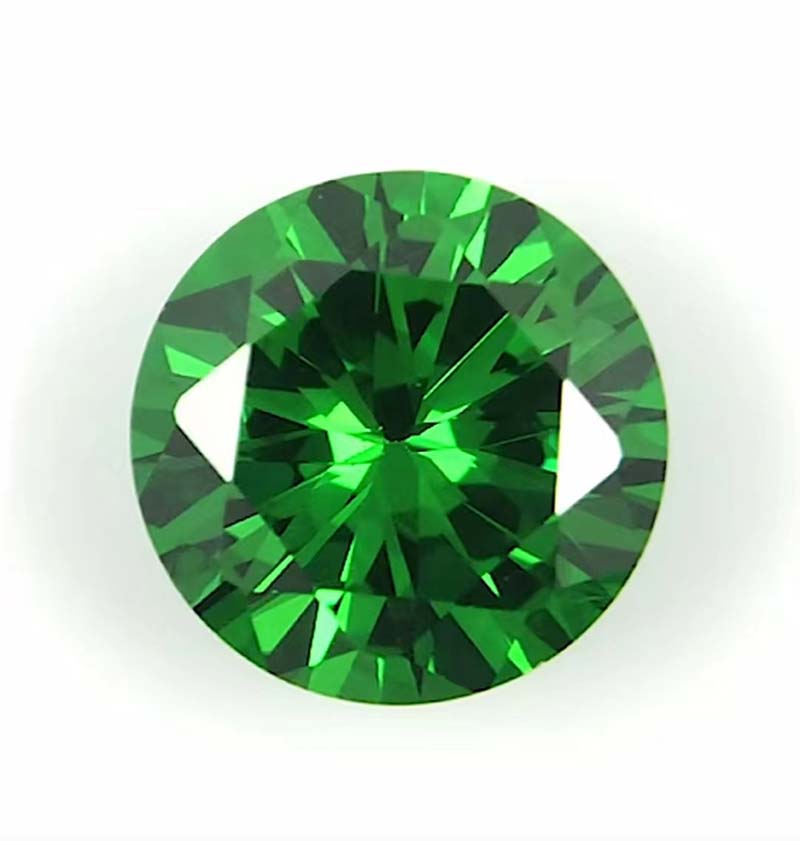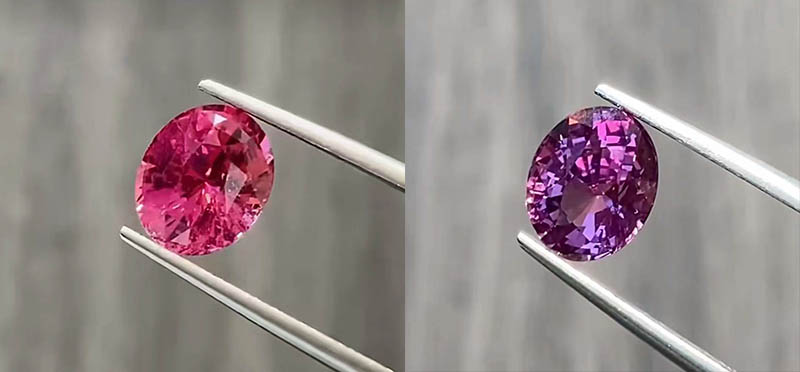
What is a fine cut gemstone:
There is no universally accepted criterion for fine-cut gemstones. The GIA’s cutting standards for diamonds inspired the concept of a fine cut. If the cut, symmetry, and polishing ratios are all outstanding, we call it a 3EX cut, or an internally fine diamond.
Colored gemstones are much more difficult to standardize than diamonds. Because the hardness, dispersion value, refractive index, and other properties of each gemstone type differ, developing a precise criteria to identify a fine-cut gemstone is impossible.


However, there are many common points in the diamond; we indicated that this cut ratio includes elements like the crown angle, pavilion angle, complete depth ratio, table width ratio, and so on. In fact, these figures are a measure of the cut ratio, a critical metric. If we cut too thick or too thin, the color of the flames will be affected. Many individuals will pursue the table large gem, however the table large gem will almost surely be thinner after light leaking.
Asian cut & European cut:

On the market, we frequently hear about Asian and European price drops. The Asian cut is more in keeping with our Asian aesthetic. It is more weight-preserving; the cut will be slightly thicker. It appears to have spherical proportions. The term “European cut” does not imply that the cut must be completed in Europe, but rather that the standard is more in line with the more mature jewelry market in Europe. European cuts are less concerned with loss and may wish to improve the fire color of the stone at the expense of some weight. Weight is prioritized in the Asian cut.


From the front, you can see that the brilliance and sparkle, as well as the fire, are quite good. However, as you turn it, you will notice that the fire has gone out. When viewed from the side, it has essentially no crown and is fashioned like a funnel. If it’s like this, I don’t think it’ll be a good cut. Because the cut proportions aren’t really appealing.


comparative
If this stone is on the market, many people will assume it is a superb cut since its fire color is quite good when viewed from the front, but when viewed from the back, you will notice that its dark area is reminiscent of a ghost, which is always hidden behind it, as if there is something unusual about its fire hue.
We flipped it over and discovered that my stone’s cut was definitely a little thick. It’s a bit of a reach to claim it’s not a fine cut, in my opinion.



This is a very obvious thin stone. When we look at it from the front, we see that it’s a little bit like a doughnut in the ring, and that kind of sparkle around it.
But in the center is where it feels like we can see what’s behind it, kind of like this glassy kind of feeling, like this one is obviously missing the bottom. It must be very thinly cut.
The symmetry of the stone:
Depending on whether it is the same distance, a round gemstone can equate to a point in its center, such as 12:00, 3:00, 6:00, or 9:00. Or, to put it another way, consider the same round gemstone as a pizza, cut it into 8 petals, and then overlap and 8 pizzas together, whether they can completely overlap, there is no extra place, such as this kind of word is a very obvious and beautiful perfect symmetry of a very good gemstone.


How can we tell if it’s a teardrop-shaped horse’s eye? Like a leaf, we can look for a central axis that correlates to the center.The symmetry improves when the left and right sides coincide. The top and bottom, left and right, axes of symmetry of the emerald pair cut might entirely overlap.


It is also very easy to overlook the bottom tip, let’s turn it over and look at the side of the stone.
On the market, many precious stones have crooked tips. We generally refer to this kind of crooked ass gemstone as crooked ass.


For example, when we get a gemstone, if we look at it from the front, the fire color is quite good. However, once we turn it on its side, we will find that the butt is crooked.
Polishing:
Polishing this item is a lot of people easy to ignore the place, there may be its cutting ratio is very good, symmetry is also very good.
But always feel that the gemstone has a hazy feeling, we are observing the gemstone on each face and the other face of the junction of the place, whether it is like a knife blade like a very sharp and very straight kind of feeling, like this kind of word is polishing is very good.


The supplier may place the line in the same parcel if it is not very clear, misty, or a very visible white line. Its prisms have gotten exceedingly hazy after a long period of grinding about. Like spinel, peridot, and other gemstones, we frequently discover that this white line is simply too much wear. A very common polishing grain, or polishing disorder, as the name implies, damages the surface of the gemstone in the polishing of the texture left behind. In general, it is a parallel line. It is typically a parallel line. This phrase is used when someone is not very careful during polishing.
The condition of reaching full fire color:

If a gemstone is constructed with its refractive index in mind, cut with ideal proportions and symmetry, and polished to perfection, it will have the desired full fire color. What exactly is full fire color? What color is full-fire? When we receive a gemstone, we will see that it has some bright parts and some dark areas, which are referred to as bright areas and dark areas, respectively. A gemstone with complete fire color must be bright all throughout; it must have more light spots and very few dark sections, with the dark portions buried between the bright areas. During rotation, there is no dead space, and dark parts can be turned into light areas.
First example
To offer you a practical example, consider the end of a highly obvious technique to determine what is fine-cut. The first is a pair of green sapphires; this one has a bottomless sense; it is a fire color concentrated in a circle; its counterpart, a full fire color, does not appear to be any different.


Second example
The second set consists of two yellow sapphires. Have you noticed how stark the contrast is when you place them together? One of them has a great feeling of live color; it has a wonderful sense of live color.
Third example
And it’s really full, and have you noticed that this one is missing a fire color? This is a spinel pair. If the one on the left stood alone, many men would say its fire is adequate, but there is a significant difference between it and a genuine spinel.

Fourth example
The fourth group is a comparison of sapphires, again a square circle; this one is a regular cut; this one is a fine cut; aren’t they very different?

The same is true of a heart-shaped sapphire; this one is a regular heart-shaped cut, and this one is a fine cut; can you tell the difference?

To recap, if this gemstone is a fine cut, it must have a fair proportion of cut, symmetry, and polishing, and it must be a full-fire colored gemstone when we actually view it, and achieving 4 items is a very powerful fine cut gemstone.
Did you find out?










